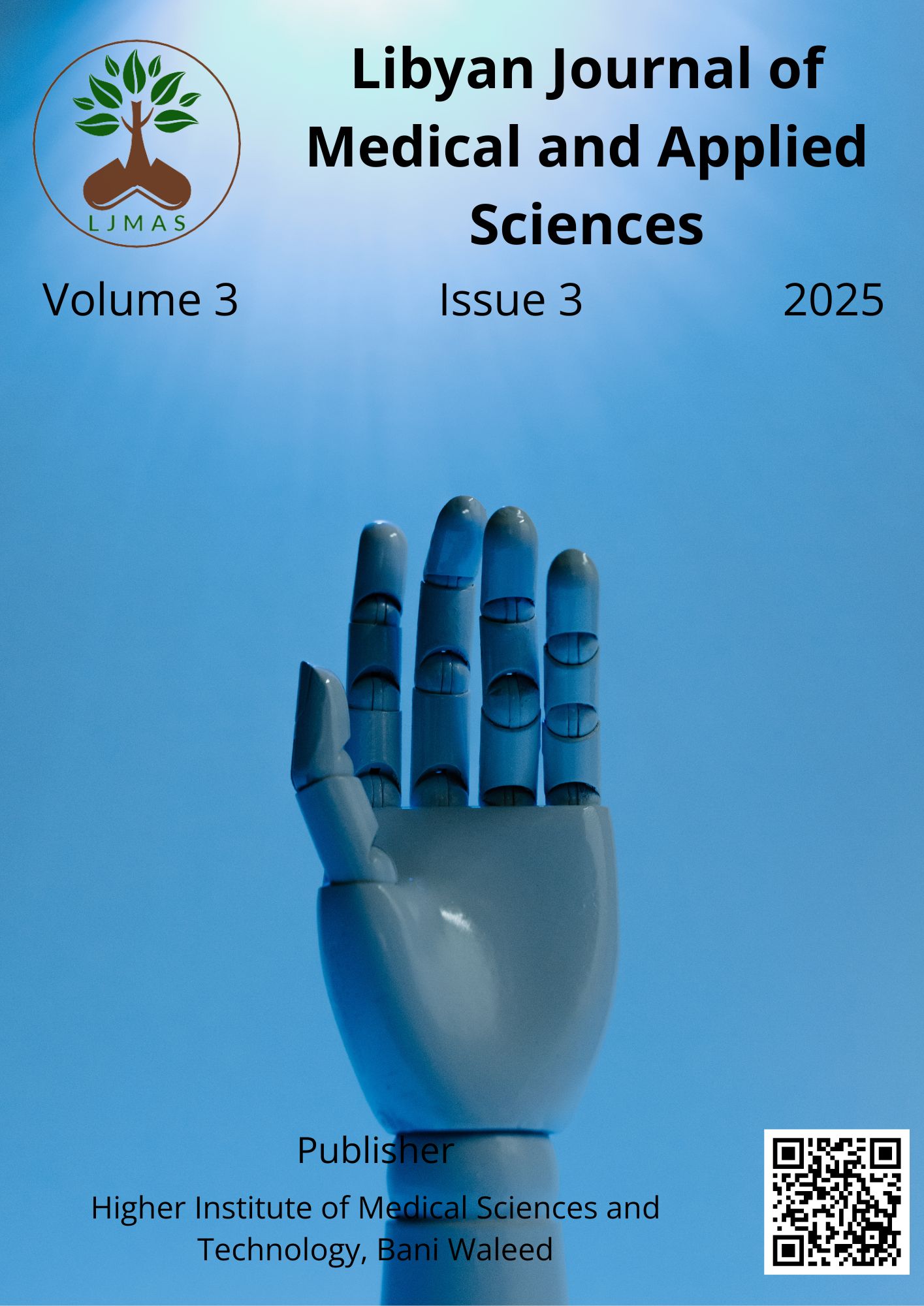Nutritional Status and the Role of Clinical Pharmacists in Hemodialysis Patients: An Anthropometric Study from Tripoli
محتوى المقالة الرئيسي
الملخص
Malnutrition is a frequent and serious complication in patients on maintenance hemodialysis (MHD), leading to increased morbidity and mortality. Despite its clinical significance, nutritional status in this population is often underassessed and undertreated. Integrating clinical pharmacists into the multidisciplinary team offers an opportunity to improve patient outcomes through counseling, dietary monitoring, and collaborative care. This cross-sectional study included 100 adult end-stage renal disease (ESRD) patients undergoing MHD at the Tripoli Center for Dialysis to assess nutritional status using anthropometric and functional parameters—body mass index (BMI), mid-arm circumference (MAC), triceps skinfold thickness (TSFT), mid-arm muscle circumference (MAMC), and handgrip strength (HGS)—and to highlight potential clinical pharmacy contributions. Among participants (53% males, 47% females; mean age 50.4 ± 12 years), 55% had normal nutrition, 35% were mildly to moderately malnourished, and 10% were severely malnourished. Protein depletion (MAMC) occurred in 32%, and HGS weakness in 16%. Age and HGS predicted mild to moderate malnutrition, while height, weight, BMI, and TSFT predicted severe malnutrition. BMI and HGS were associated with age, and HGS correlated with gender. These findings demonstrate that malnutrition is highly prevalent among hemodialysis patients in Tripoli, underscoring the need for routine anthropometric assessment and the active involvement of clinical pharmacists to ensure early detection and optimization of patient care and outcomes.
تفاصيل المقالة

هذا العمل مرخص بموجب Creative Commons Attribution 4.0 International License.





